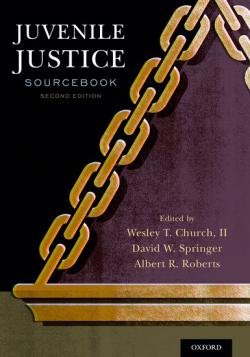Criminal Justice
Chapter 14: Behavior Management
This chapter provides a multi-tiered framework for an effective behavior management plan for use in juvenile confinement facilities. It provides guidance to juvenile facility administrators on how to create a therapeutic environment for youth based on positive behavior and intervention supports, discusses best practices in various aspects of facility operations, and highlights ineffective control measures. The framework distinguishes crisis management from behavior management, and discusses both appropriate and inappropriate use of force practices.
Chapter 1: Historical Perspective
This chapter examines historical trends in the juvenile justice system in the United States, from its start in 1899 to the present. These broad shifts in policy and practice provide insights into current challenges facing the field of juvenile justice.
Restoring Rundberg: A community-research partnership
Resident feedback on the Restore Rundberg community survey
Prisons and crime: Backwards in high heels
pObjectives: Prisons reduce crime rates, but crime increases prison populations. OLSbr /
estimates of the effects of prisons on crime combine the two effects and are biased towardbr /
zero. The standard solutionmdash;to identify the crime equation by finding instruments forbr /
prisonmdash;is suspect, because most variables that predict prison populations can be expectedbr /
to affect crime, as well. An alternative is to identify the prison equation by findingbr /
instruments for crime, allowing an unbiased estimate of the effect of crime on prisons.br /
Because the two coefficients in a simultaneous system are related through simple algebra,br /
we can then work backward to obtain an unbiased estimate of the effect of prisons onbr /
crime.br /
Methods: Potential instruments for crime are tested and used to identify the prisonbr /
equation for the 50 U.S. states for the period 1978ndash;2009. The effect of prisons on crimebr /
consistent with this relationship is obtained through algebra; standard errors are obtainedbr /
through Monte Carlo simulation.br /
Results: Resulting estimates of the effect of prisons on crime are around -0.25 plusmn; 0.15.br /
This is larger than biased OLS estimates, but similar in size to previous estimates based onbr /
standard instruments.br /
Conclusions: When estimating the effect of a public policy response on a public problem,br /
it may be more productive to find instruments for the problem and work backwardbr /
than to find instruments for the response and work forward./p
Assessment of adolescents
An overview of juvenile justice and juvenile delinquency: Cases, definitions, trends, and intervention strategies
Juvenile justice sourcebook, 2nd edition


